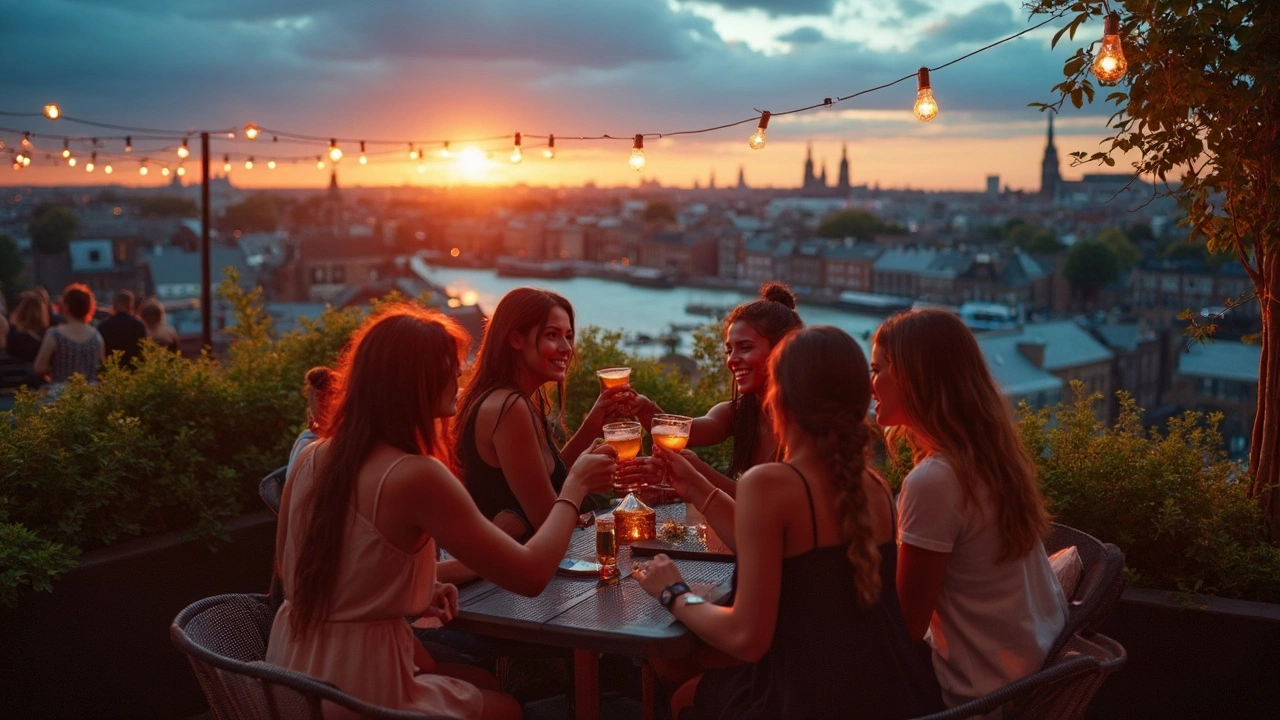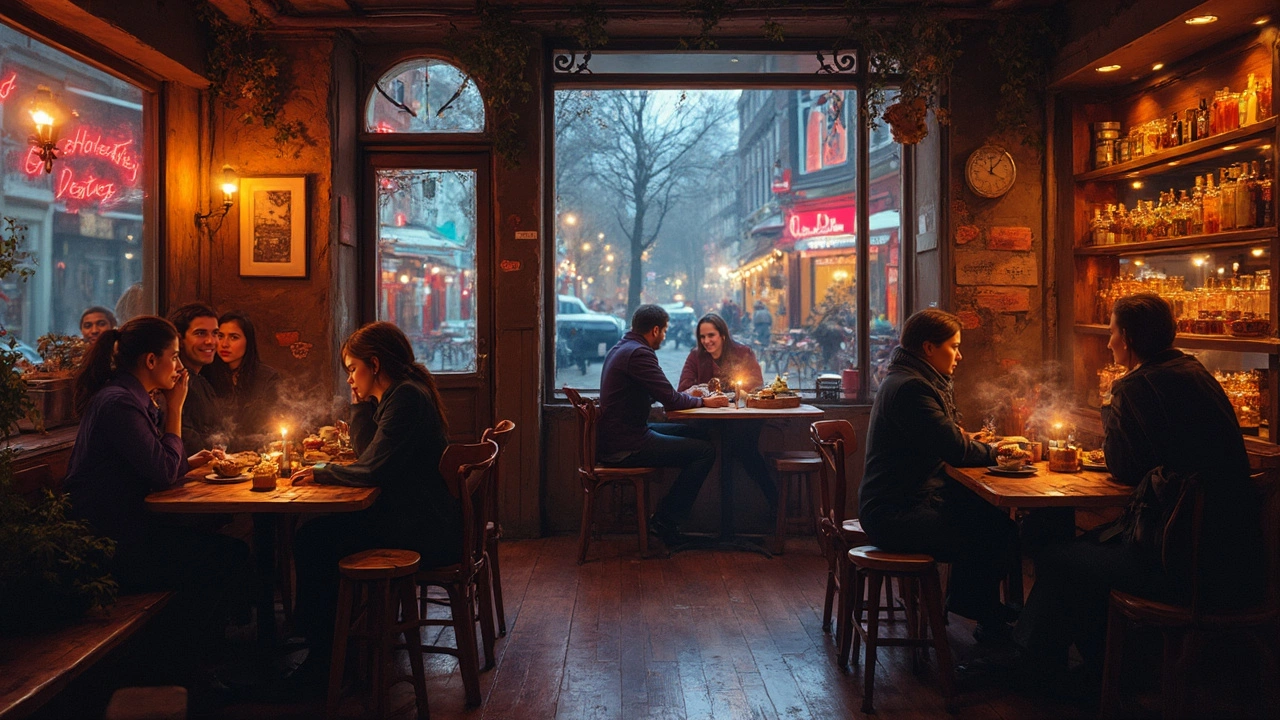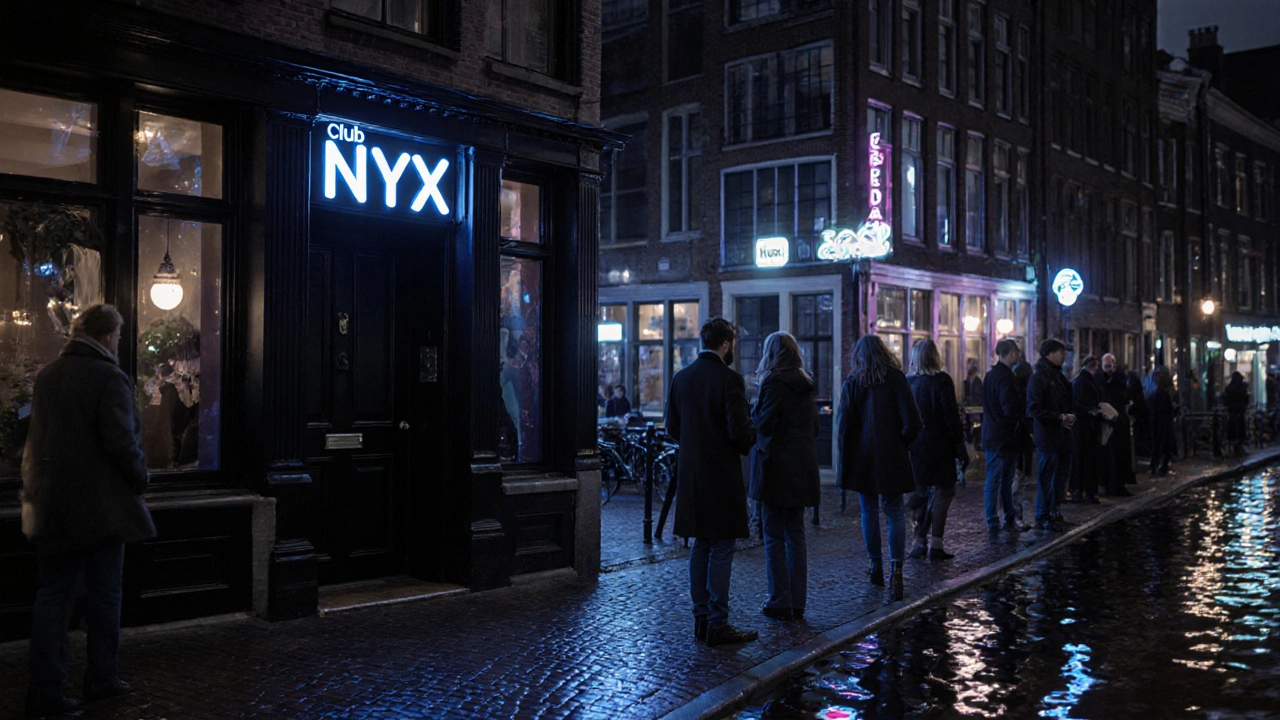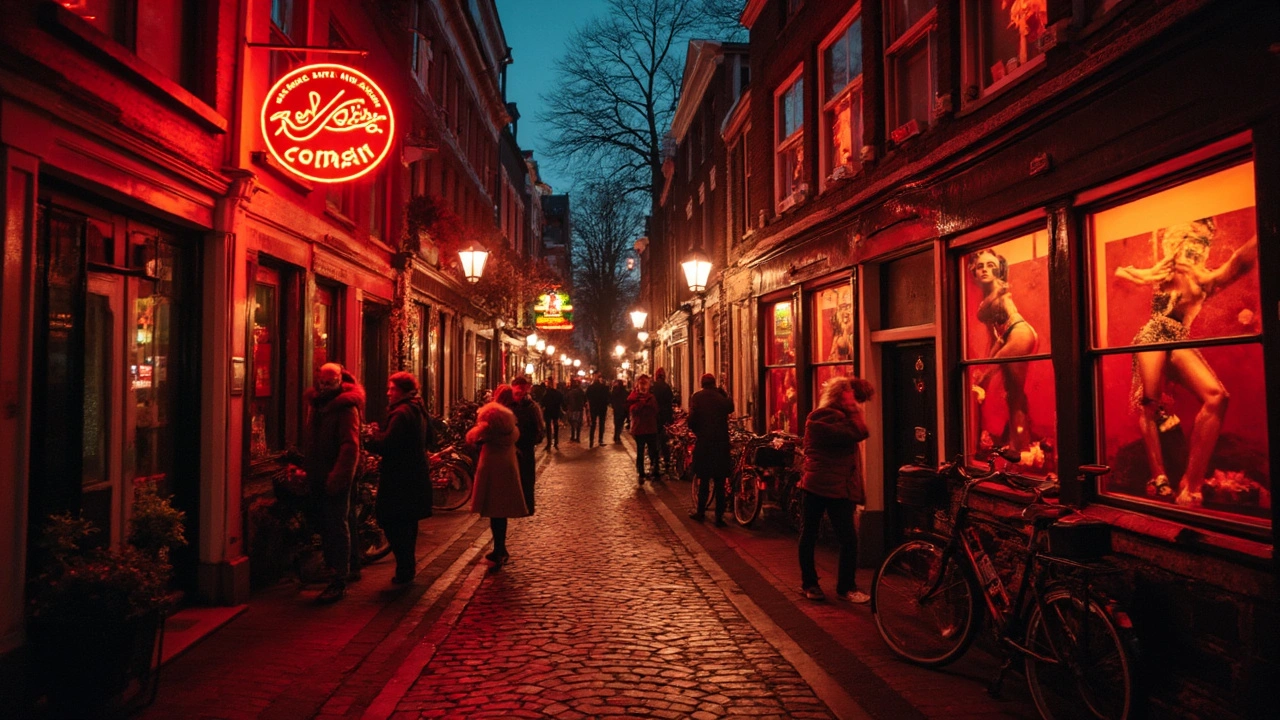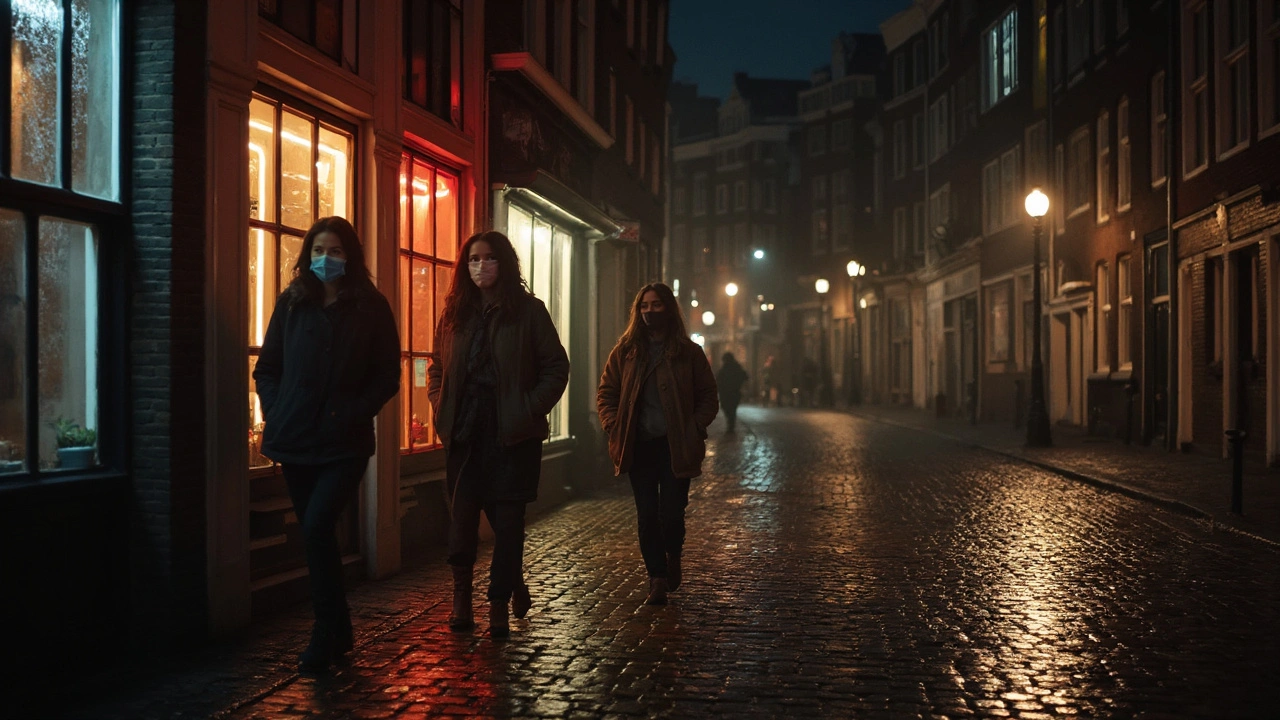
You probably think Amsterdam’s Red Light District never really sleeps—always hustling, always glowing with neon. But COVID-19 didn’t care about the city’s oldest trade. When that first wave hit, everything changed for call girls in a way most people outside the industry can’t even imagine. Strip away the tourist selfies, forget the movie clichés: what happened here was harsher, stranger, and way more complex than most news headlines let on.
A City that Suddenly Went Silent
Amsterdam is famous for letting people be who they want to be. But when COVID-19 cases spiked in early 2020, tolerance gave way to panic. The Red Light District, usually buzzing with tourists, bar-crawlers, and late-night adventurers, became a ghost town overnight. Windows once glowing with red lights went dark. Brothels and private clubs shut their doors, and street windows emptied. Doors weren’t just closed—they were locked tight and taped over.
For sex workers—especially independent call girls—this was a disaster. The city government made it illegal for any sort of close-contact work. For almost five months in 2020, all sex work was suspended, even though other businesses started reopening in June. According to a report from the Municipality of Amsterdam, income for call girls dropped by more than 80% in March–June 2020. Suddenly, the buzz of a phone or the vibration of a message meant nothing but anxiety: some clients pulled out, while others demanded risky, secret meetups.
Some women tried to move their business online. OnlyFans, cam sites, and app-based arrangements became a lifeline. But the switch isn’t as easy as dropping a webcam on a shelf. There’s fierce competition, and not everyone feels comfortable putting themselves out there in a new way. Plus, regulars who were used to face-to-face encounters weren’t always up for watching a screen. The sudden shift to digital exposed real divides in tech skills, privacy fears, and personal boundaries.
Even as restrictions eased, new rules—like social distancing and mandatory testing—didn’t exactly work in a business based on physical connection. Imagine trying to sell intimacy with protective masks on, or explaining to a client that hand sanitizer is non-negotiable. One sex worker named Rosa told NOS, "Clients think we’re supposed to make them forget about virus rules, but these rules decide if we can work at all." The old idea that Amsterdam’s prostitutes are unshakeable just wasn’t true anymore. Vulnerability took center stage.
Financial Fallout and the Race for Survival
Everyone was hurting, but sex workers had a unique kind of trouble. Many worked as self-employed freelancers, which meant no regular salary, no normal employment protection, and no paid sick days. So when income vanished, bills didn’t. Rent was still due. Groceries weren’t going to pay for themselves.
Getting help from the state wasn’t easy, either. The Dutch government provided support to many self-employed workers, but not all call girls qualified. Some couldn’t produce the same paperwork since cash payments and informal arrangements were part of the usual norm. Others simply didn’t want to register with authorities, fearing stigma or future legal problems. A study by the PROUD sex workers’ union in 2021 found that 55% of respondents could not access the government’s COVID-19 aid program for self-employed workers during the first year of the pandemic.
This led to survival strategies that were risky and unsustainable. Women moved in together, pooled resources, got second (or third) jobs delivering food, cleaning, or babysitting. While these side hustles helped cover rent, the risk of COVID exposure often stayed high—and the pay was lower than what they were used to. There’s a basic reality here: sex work pays well in good times, but the game changed fast.
Here’s how incomes shifted, according to a survey by Aidsfonds in November 2020:
| Pre-COVID Average Monthly Income (€) | Post-Lockdown Average Monthly Income (€) |
|---|---|
| 2,500 – 5,000 | 500 – 900 |
There’s an endless strain when every euro counts and uncertainty is the new normal. Many call girls supported families back home—sending money to Romania, Bulgaria, or Spain. Suddenly they had nothing to give, with dependents still waiting. Local charities like De Regenboog Groep and the Humanitas foundation tried to step in, offering food parcels and emergency financial support, but demand always out-stripped supply.
By early 2021, you could see who’d been hit hardest just by walking down Oudezijds Achterburgwal. More empty windows. More boarded-up brothels. More graffiti marking what used to be someone’s livelihood. The Red Light wasn’t just dimmed—it was flickering out for many.
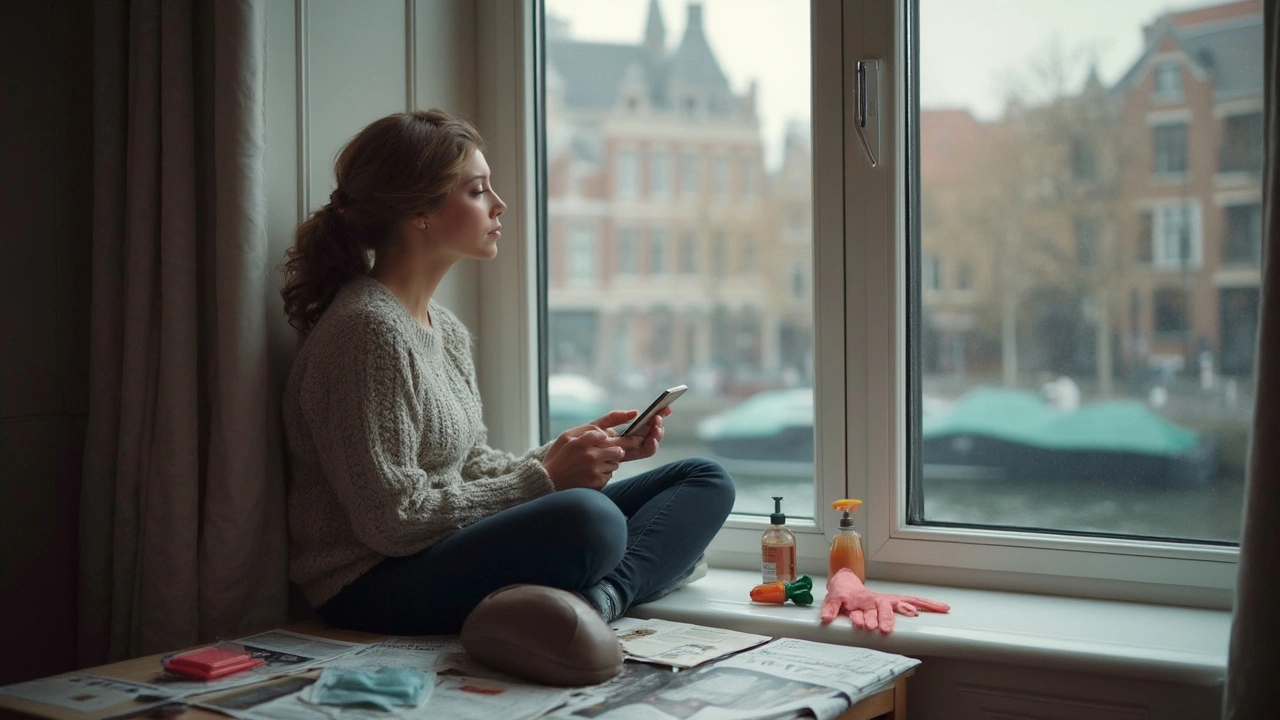
The Mental Toll: Hidden Costs Nobody Talks About
People don’t like talking about what COVID did to mental health in the sex industry. There’s still a weird shame about it. But several call girls say the isolation and worry cut deeper than the lost paychecks. Working in the Red Light District or as a call girl means routine: regulars, friendships, the odd smile from the neighbor on your way to work. When lockdowns hit, call girls were yanked out of that world, sometimes forced to stay in cramped apartments with roommates or strangers. The risk wasn’t just about getting sick—it was about losing touch with the outside world.
One Amsterdam-based psychologist, Dr. Jeroen Zwaal, puts it like this:
"Sex workers experience a double isolation—cut off from both their social lives and their professional communities due to the stigma. The pandemic just made that burden bigger."
People outside the industry struggled too, but sex workers often couldn’t call on the same networks for help. Some were too afraid to tell even their closest friends about their jobs in the first place. When money ran out, stress spiked. Some call girls reported anxiety, insomnia, panic attacks, and full-blown depression. The city’s social workers tried to fill in with remote counseling and WhatsApp groups, but not everyone had the phones (or privacy) needed to get help.
Security was a new worry, too. As the city emptied out, the risk of crime went up. Brothel managers couldn’t afford to keep full security staff. Fewer people on the street meant fewer eyes on trouble. Some call girls found themselves harassed by former clients or strangers prowling empty alleys. The police tried to patrol the Red Light District more often but said resources were stretched thin. One woman said, "I used to feel safe walking home at 3 a.m. Now, there’s no one but shadows. It’s scary in a way the virus isn’t."
The kids at home—like my daughter, Emelia—kept asking questions: Why can’t we go outside? When will things be back to normal? The grownups didn’t have good answers. The uncertainty seeped into every part of life, making everyone tense. For call girls who are mothers, juggling homeschooling and finding enough freelance work online meant 18-hour days, little sleep, and almost no peace of mind.
By 2021, conversations in every parent WhatsApp group began to include side discussions about help lines, therapy costs, and burnout. You’d hear more people saying, “I just can’t do this anymore,” regardless of their background. But for sex workers in Amsterdam, that weight was doubled by secrecy and fear of judgment.
The Changing Face of Sex Work in Amsterdam
The past five years haven’t left Amsterdam’s call girl scene untouched; they’ve changed it for good. Some changes might stick around even after the pandemic fades into history. For one thing, COVID-19 accelerated a trend that was already underway: a shift from visible, window-based work toward more private, tech-driven arrangements. The old world of the Red Light District isn’t gone, but it’s shrinking.
More call girls now work from apartments, using apps and encrypted messaging to arrange dates. Discretion became king. Legal risks didn’t go away, but digital work offered slightly more control. Of course, there’s still plenty of risk when things are less out in the open. Meeting strangers behind closed doors with no oversight can end badly, as activists warn, and the police reported a rise in illegal, unlicensed escorts since 2022.
The other big shift? Health and safety are now at the front of every conversation. Clients have to agree to symptom checks, cancellations happen if anyone’s sick, and social distancing is part of the negotiation (even if it’s only before and after). Most call girls now keep extra masks, wipes, and test kits at hand—no one wants to get caught off guard by a surprise case.
Amsterdam’s city council launched new training courses to help sex workers safely manage digital bookings, spot dangerous clients, and stay up to date with health regulations. Organizations like SOA AIDS Nederland distributed thousands of free COVID test kits and developed guides for safer in-person work. You still see QR code posters in some building lobbies, reminding everyone that "safety is sexy," in several languages.
Here’s a quick look at what changed by the numbers, pulled from city public health data:
| Year | Registered Sex Workers (Amsterdam) | Active Window Brothels | Known Digital/Private Arrangements |
|---|---|---|---|
| 2019 | 2,200 | 310 | ~700 |
| 2022 | 1,460 | 179 | ~1,450 |
There’s no single solution to the mess COVID-19 left behind, but the crisis forced the city—and the industry—to rethink how things are done. More sex workers now join WhatsApp peer groups, swap safety tips, and push for better legal protections. Advocacy groups gained new ground, calling for rules that actually help and don’t just punish. The government, slow as it’s been, now says it’s open to giving call girls more of a say in policy—something unthinkable a decade ago.
So, yes, if you walk through Amsterdam now, you’ll still see some red-lit windows and the echo of the old scene. But after COVID-19, things here are quieter, more cautious, and way more complicated than they used to be. The old myths faded, and a new reality came into view—one shaped by survival, connection, and a bit of hard-earned hope.

